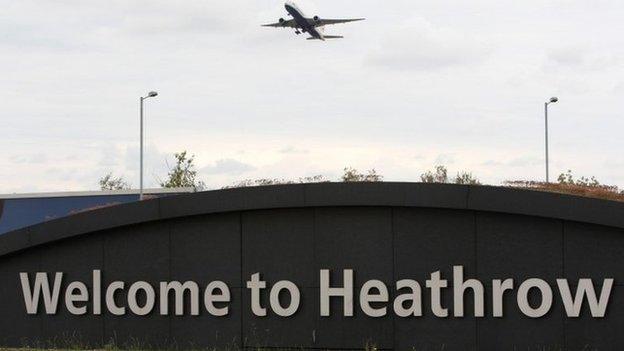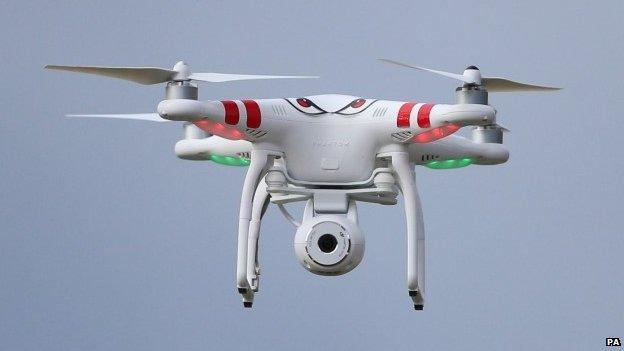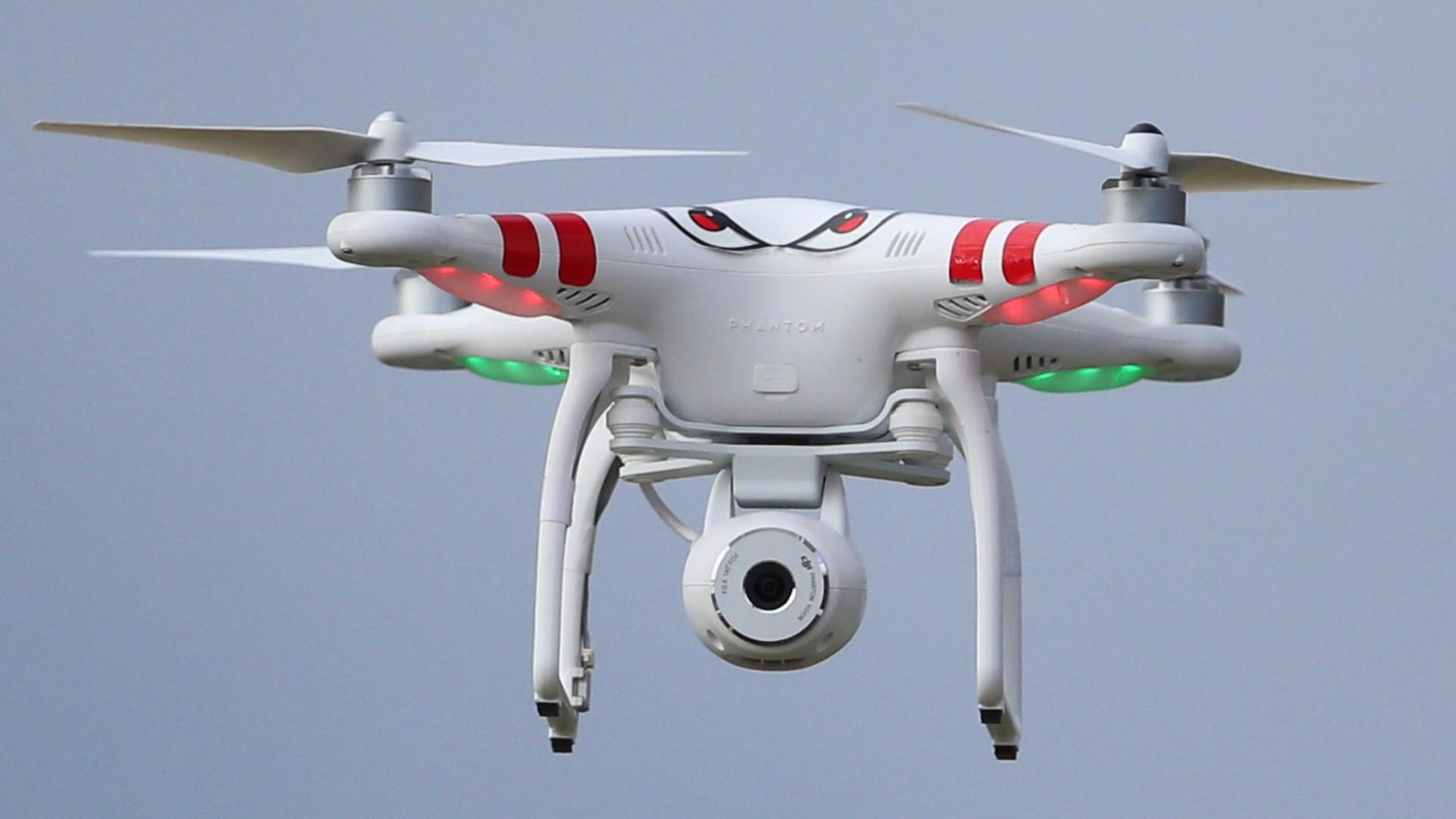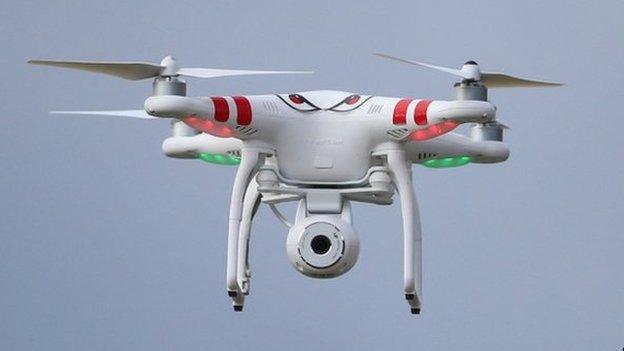Heathrow plane in near miss with drone
- Published
Nick Beake reports on what is known about the drone incident at Heathrow
An unidentified drone came close to hitting a plane as it landed at Heathrow, the Civil Aviation Authority (CAA) has confirmed.
An Airbus A320 pilot reported seeing a helicopter-style drone as the jet was 700 feet off the ground on its approach to the runway at 1416 GMT on 22 July.
The CAA has not identified the airline or how close the drone came to the plane, which can carry 180 people.
It gave the incident an "A" rating, meaning a "serious risk of collision".
This is the highest incident rating the CAA can give.
Investigators were unable to identify the drone, which did not appear on air traffic control radar and disappeared after the encounter.
Crash warning
In May the pilot of an ATR 72 turbo-prop plane reported seeing a helicopter drone only 80 feet away as he approached Southend airport at a height of 1,500 feet.
The incidents have prompted a warning from the British Airline Pilots' Association (Balpa) that the rapid increase in the number of drones operated by amateur enthusiasts now poses "a real risk" to commercial aircraft.
The association's general secretary, Jim McAuslan said drones could cause a repeat of the "Hudson River experience", when a plane was forced to land in water in New York in 2009 after birds were sucked into its engines.

"The risk of a 10 kilogram object hitting a plane is a real one that pilots are very concerned about" he said.
"A small drone could be a risky distraction for a pilot coming into land and cause serious damage if they hit one."
Sales of drones have increased rapidly, with UK sales running at a rate of between 1,000 and 2,000 every month.
They are expected to be very popular as Christmas presents.
They cost as little as £35 for a smaller model - more advanced drones capable of carrying a high definition camera and travelling at 45 miles per hour cost almost £3,000.
Only a very small minority of people operating drones have attended training courses in how to fly them.
'Common sense'
A spokesman for the CAA said it had to depend on people using their common sense when they operated drones.
He said the current level of risk should be "kept in perspective" but warned that breaking laws governing the use of drones could potentially threaten commercial aircraft.

The CAA said it had to depend on people using their common sense when they operated drones
"People using unmanned aircraft need to think, use common sense and take responsibility for them", he said.
"There are rules which have the force of law and have to be followed."
Drones may not be flown higher than 400 feet or further than 500 metres from the operator, and they must not go within 50 metres of people, vehicles or buildings.
There are exclusion zones around airports and the approaches to them for drones weighing more than seven kilograms.
Mr McAuslan said there was an urgent need for rules to be tightened before much larger unmanned cargo planes - potentially the size of a Boeing 737 - took to the skies.
- Published27 October 2014

- Published27 October 2014

- Published17 November 2014
